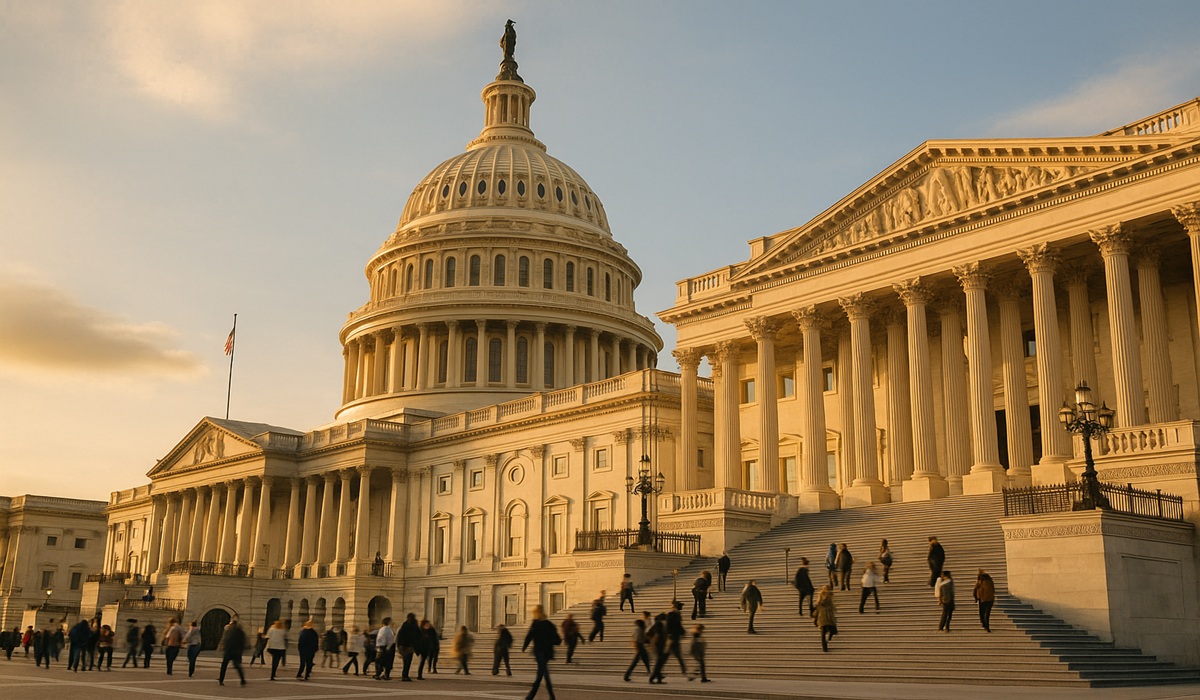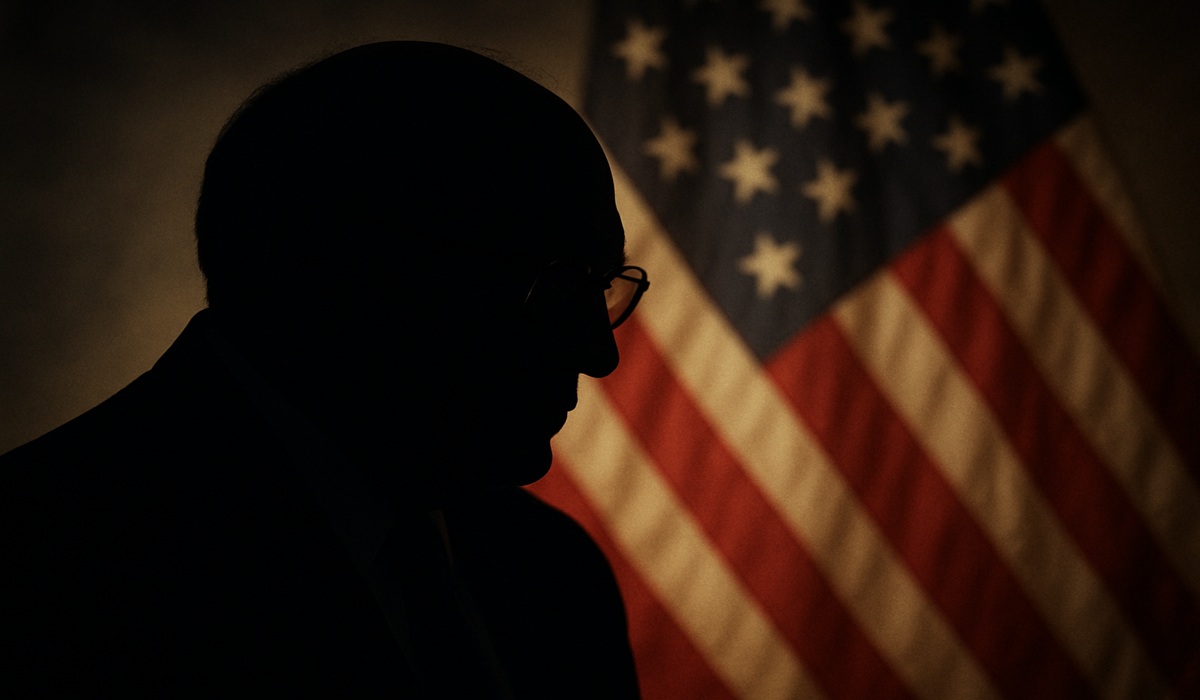A Nation Paused: America’s Shutdown Exposes the Failures of Politics
- TDS News
- U.S.A
- November 10, 2025

By: Donovan Martin Sr, Editor in Chief
Image Credit: pierre9x6
The United States has once again entered the kind of crisis that only Washington could engineer: a full-scale government shutdown that has paralyzed basic operations, thrown families into financial turmoil, and exposed just how dysfunctional the system has become. As the impasse drags on, bills are not being paid, military service members are missing paychecks, airports are cancelling flights, and millions of Americans are caught in the middle of a political standoff that seems to repeat every few years like clockwork. What makes this moment even more alarming is that it isn’t the first time it has happened—and it almost certainly won’t be the last.
The shutdown began when Congress failed to agree on a spending bill before the start of the new fiscal year. Without legislation to fund federal agencies, operations that are not deemed “essential” were forced to close. Hundreds of thousands of federal employees were immediately furloughed, while millions more—especially in defense, law enforcement, and transportation—are being forced to work without pay. For those living paycheck to paycheck, this is not politics; it is survival. Military families are borrowing money to cover mortgages. Civilian contractors are wondering if they’ll ever be reimbursed. Local economies built around military bases or federal offices are drying up, and small businesses are feeling the sting of lost customers and delayed payments.
Airports across the country have turned chaotic as the Federal Aviation Administration and Transportation Security Administration face severe staff shortages. Flights have been cancelled by the thousands, and the ripple effect is being felt nationwide. Some airports have reduced flight schedules altogether, and airlines are warning that holiday travel could be the worst in years if the impasse continues. Air-traffic controllers are among those working without pay, responsible for the safety of millions of passengers while wondering how to afford groceries. It is an absurd and dangerous irony: the people keeping the skies safe can’t afford to fly home.
Meanwhile, federal programs that help the most vulnerable Americans are collapsing. Nutrition assistance, housing subsidies, and medical services are all being delayed or suspended. Millions of families who rely on food benefits are now left in limbo, as state agencies run out of federal funds to process payments. The impact isn’t just bureaucratic—it’s personal. These programs feed children, keep the elderly housed, and provide basic stability for those already struggling to make ends meet. Every day the shutdown continues, that stability slips further away.
The courts are scaling back their schedules. Federal research projects have been paused. National parks have closed, leaving communities that depend on tourism without income. Even disaster relief operations are stretched thin because emergency funds cannot be released. From coast to coast, the human cost of political dysfunction is mounting. And yet, Washington’s response remains the same finger-pointing spectacle it has always been.
This time, Democrats and Republicans are accusing each other of playing politics with the lives of ordinary citizens. Democrats say Republicans have turned the budget process into a hostage situation, demanding spending cuts and policy concessions in exchange for reopening the government. Republicans counter that Democrats are refusing to compromise, insisting on social-program expansions and healthcare subsidies that go beyond current spending limits. Both sides insist that the other is being unreasonable. Both sides are right—and both are wrong. This isn’t about ideology anymore; it’s about political theater.
The system itself is to blame as much as the politicians who operate within it. The U.S. government’s budgeting process, designed in the mid-1970s, requires Congress to pass a dozen separate appropriations bills each year or face a shutdown. In theory, this forces accountability. In practice, it has created a perpetual cycle of brinkmanship where lawmakers hold the federal government hostage to extract concessions. Every few years, the same story unfolds: a deadline passes, agencies close, workers go unpaid, and the public grows angrier and more disillusioned. It’s an archaic system that rewards conflict over cooperation and punishes the very citizens it is supposed to serve.
Behind the scenes, negotiators are scrambling to reach a temporary agreement. The most talked-about proposal on the table is a stopgap measure that would fund the government for a few more months while leaving major disputes unresolved. It would restore pay for federal workers, reopen agencies, and allow airports to return to normal operations—but it would only postpone the next crisis until early next year. Democrats want guarantees on healthcare subsidies and social programs; Republicans want spending limits and a commitment to address the national debt. The compromise under discussion would give both sides just enough to claim victory, but not enough to solve the problem.
And that is the tragedy of it all. America’s shutdowns have become routine because politicians have learned how to weaponize them. They are no longer accidents; they are strategy. Both parties believe they can use the spectacle to rally their bases and score points before the midterms. As the election season approaches, every press conference, every floor speech, and every soundbite is designed to assign blame rather than find a solution. The result is a government that functions only when it suits the political calendar.
For the average American, this shutdown is not a partisan issue—it’s an existential one. Paychecks have stopped, but rent is still due. Groceries, gas, and childcare still cost money. A Coast Guard officer who swore an oath to serve now has to visit a food pantry. A single mother who relies on government assistance must choose between electricity and dinner. A traveler stranded at an airport wonders how the world’s largest economy can’t fund its own security checkpoints. Each story is a reminder that behind the statistics are human beings caught in a crisis they did not create.
Historically, shutdowns have ended with short-term deals that solve nothing. In 1995, 2013, and again in 2018, both parties claimed victory after temporary fixes. But the pattern never changes because the incentives don’t. The party in opposition gains political leverage by allowing the government to grind to a halt, hoping the public will blame the other side. The party in power digs in, afraid that compromise will look like weakness. And so the dance continues. The only constant is the suffering of the people who have no seat at the table.
The economic toll is staggering. Every week the government stays closed, billions of dollars in productivity vanish. Contractors lose work, small businesses lose customers, and markets lose confidence. Economists warn that the ripple effect could push growth numbers down for the quarter, and if the shutdown drags into the new year, the damage could reach recessionary levels. The United States, a country that prides itself on stability, has turned its own bureaucracy into an economic weapon against itself.
What makes this particular shutdown even more perilous is timing. The midterm elections are less than a year away, and the stakes are enormous. Control of Congress could shift again, reshaping the balance of power and determining whether this gridlock becomes the new normal. Both parties are using the shutdown to test their messaging and gauge voter sentiment. Democrats are portraying themselves as defenders of social programs; Republicans are positioning themselves as fiscal guardians. But to most Americans, both narratives ring hollow. When the government stops functioning, ideology means little. Results are what matter—and neither side is delivering.
If there is a lesson in this moment, it is that the American system, for all its strengths, is showing its age. The process of funding a government should never bring the country to its knees. Yet, here we are again—families waiting for paychecks, travelers sleeping in airports, soldiers wondering when their sacrifice will be honored with a simple deposit into their accounts. This is not governance; it is political self-sabotage dressed as principle.
Eventually, a deal will be struck. The government will reopen, paychecks will resume, and officials will congratulate themselves for ending a crisis they created. But until structural reforms are made—until the nation moves beyond this cycle of brinkmanship—the next shutdown is already on the calendar. Both Democrats and Republicans will again point fingers, and Americans will again foot the bill for their failure.
This shutdown is not about left versus right, red versus blue, or any of the familiar slogans. It is about competence versus chaos. It is about whether the world’s most powerful democracy can still perform the most basic task of governance: keeping the lights on. For now, the lights are dim, and the world is watching. The people deserve better than a system that uses them as collateral in a never-ending partisan war. Until that changes, every so-called reopening will only be another pause before the next predictable collapse.








